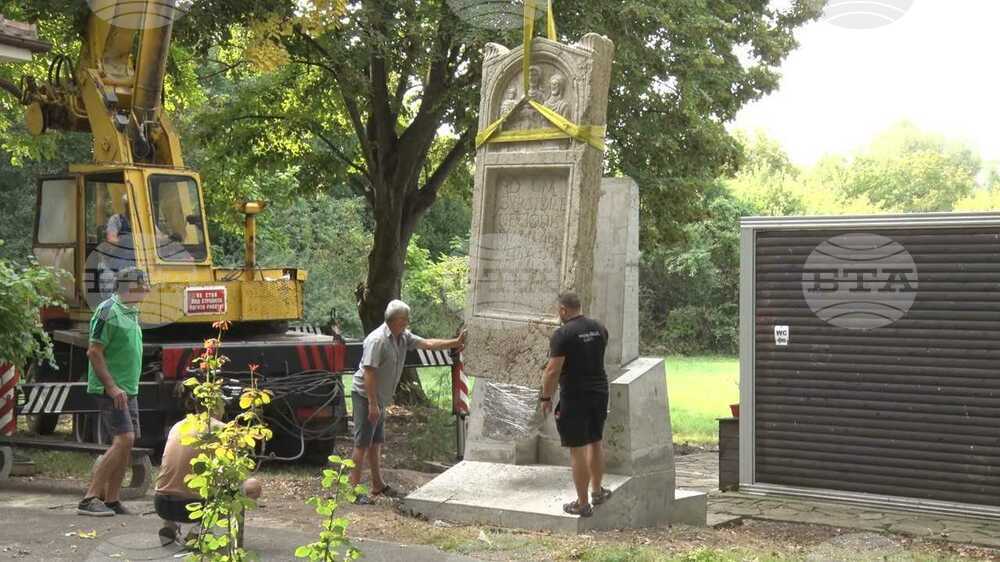site.btaAncient Ceramics Centre near Pavlikeni Exhibits Two Tonne Roman Tombstone


A tombstone dating back to the 2nd century was placed as an exhibit in the Ancient Ceramics Centre near Pavlikeni, the press centre of the town's municipal administration said on Friday.
The Roman era tombstone was discovered during autumn plowing at the end of October 2016, when a tractor driver hit a stone with his machine in the immediate vicinity of the Ancient Ceramic Centre. The driver notified the Pavlikeni History Museum, after which archaeologist Kalin Chakarov established that the size of the discovery was a tombstone with a height of about three metres and a weight of nearly two tonnes.
The find is of great importance to the history of the Roman villa in the Ancient Ceramic Centre and is the most detailed written monument found at the site. Through it, for the first time, reliable data on the location of the cemetery were obtained. On the front surface of the tombstone there are relief images of two women, a male figure and a relief of the Thracian horseman god. In the lower field, the perfectly preserved inscription contains an address to the underworld gods and information about the buried person. His name was Gaius Ursidius Senetion, who lived for 40 years. The person who took care of the burial and the tombstone was his wife Yulia Valentina. The two are probably relatives of the founder of the Roman villa.
The tombstone is a valuable monument, as it is the only one that provides information such as names and epigraphic sources about the inhabitants of the Ancient Ceramic Centre near Pavlikeni, said Elena Chanakchivarova, Director of the Pavlikeni History Museum. The centre is considered the first open-air museum in Bulgaria, which the archaeologist Bogdan Sultov discovered and explored for ten years from 1971 to 1982. It consists of a villa from the Roman era, which is called Villa Rustica, and a production centre for ceramic production, which functioned from the end of the 1st century AD to the middle of the 4th century.
/MY/
news.modal.header
news.modal.text